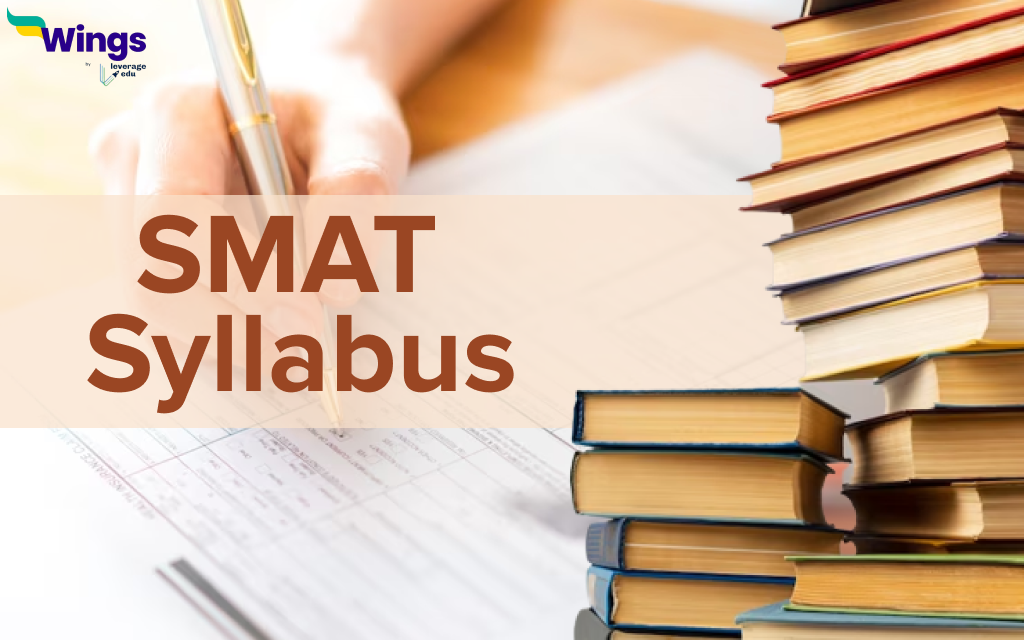SMAT Syllabus: Shiv Nadar University Management Aptitude Test, popularly known as the SMAT exam, is conducted by Shiv Nadar University annually for admissions to its full-time MBA programme.
The SMAT Examination will be conducted tentatively in the first week of July 2023. Test takers must be aware of the SMAT syllabus to score the marks they are aiming for. The article entails the details regarding the syllabus one need to cover for the SMAT examination. Candidates must read the article attentively and acquaint themselves with the syllabus and other relevant information regarding the SMAT examination.
| Name of Examination | SMAT |
| Full Name | Shiv Nadar University Management Aptitude Test |
| Conducting Authority | Shiv Nadar University |
| Examination Level | University Level |
| Examination Frequency | Held once a year |
| Examination Duration | 90 Minutes |
| Examination Medium | English |
| Application Mode | Offline/Online |
| Application Fee | INR 1200 |
| Official Website | snu.edu.in |
Contents
SMAT Syllabus
The syllabus for the SMAT exam comprises of three different sections. We recommend that candidates prepare for each section separately. Accordingly, we have curated the subjects and topics for each section. Test takers must have a look and learn about the SMAT syllabus they need to prepare for the examination.
Quantitative Aptitude
The subject examines the quantitative skills with the logical analytical skills of the students. The topics that students need to cover for the Quantitative Aptitude section of the exam are given in the table below.
| Numbers | Partnership |
| Time, Distance & Speed | Ratio & Proportion |
| Vectors | Determinants |
| Permutations & Combinations | Work-Related Problem |
| Averages and Percentages | Integration & Combinations |
| Geometry | Profit and Loss |
| Circles & Mensuration | Mixtures and Alligations |
| Roots, Indices, Surds | Simple Interest & Compound Interest |
| Pipes & Cisterns | Algebra |
| Probability | Linear & Quadratic Equations |
Also Read: SMAT 2023
Verbal and Reading Comprehension
This section will examine the basic English skills and verbal ability of the students. The topics for Verbal & Reading Comprehension are mentioned below.
| Idioms and Phrases | Deductive Reasoning |
| Subject-Verb Agreement | Reading Comprehension |
| Tenses, Parallelism and Modifiers | Prepositions & Conjunctions |
| Logical Consistency | Pronoun Errors |
| Antonyms and Synonyms | Syllogisms |
| Foreign Words Noun & Pronoun Errors | Analogies |
Data Interpretation and Logical Reasoning
The Data Interpretation and Logical Reasoning section examines the student’s ability to review data, do rigorous mental activity and conclude. The topics for the following are mentioned in the table given below.
| Family Tree & Directions | Selection Criteria |
| Logical Puzzles | Coding and Decoding |
| Analogies, Odd one out | Calendar |
| Sequential O/P Tracing | Group Conditionality |
| Arrangements: Linear, Circular, Matrix Arrangements | Syllogism |
| Logical Series | Symbol Based Logic |
FAQs
There are three sections in the SMAT examination, namely, data interpretation and logical reasoning, verbal and reading comprehension and quantitative aptitude.
Students can refer to the Quantitative Aptitude for Competetive Examinations, The Pearson Guide to Quantitative Aptitude for Competetive Examination and Aptipedia Aptitude Encyclopedia by FACE, etc.
The full form of SMAT is Shiv Nadar University Management Aptitude Test.
Students will be provided with 1 hour and 30 minutes in total for the examination.
In this blog, we have discussed the syllabus for the SMAT examination. We hope candidates can use the information provided in this blog in order to prepare comprehensively for the SMAT examination.
For more such updates, check out our Indian exams page and do not forget to follow us on Instagram, Facebook, Twitter and LinkedIn.
 One app for all your study abroad needs
One app for all your study abroad needs














